Six Countries in One Month 2024
A little Round Trip in Northern Europe
For this year, I planned a longer vacation in the Northern part of Europe. Everything just started, when I decided to go to the I Prevail concert in Hamburg. I felt like I need to do more than just going to Hamburg, since it was an almost eight hours train ride from Freiburg. So I started to do a little research and finally I added Copenhagen and Malmö to the list. Since I also had the Faroe Islands on my travel list for a while, it was the perfect opportunity to fly there from Copenhagen. I was already excited about the trip, when I also found out, that there are also direct flights to Edinburgh from the Faroe Islands. And here it went into the holiday in six European countries - Germany, Denmark, Sweden, Faroe Islands, Scotland and England.
On the day of the departure in Freiburg, it was such a bad weather with wind and rain. What a bad timing, I thought, but luckily, when I arrived in Hamburg, there was sunshine and a feeling of summer in the air. The first thing, I had to do when I arrived in Hamburg, was getting one of the amazing and tasty Franzbrötchen. After this refreshment, I went to my guesthouse to leave my luggage. Since it was in the perfect location close to the City Hall, I directly started with a walk around Hamburg. During the days, when I was living in Göttingen, I often visited Hamburg, but since it's one of my favourite cities in Germany, I really loved to walk around and also visit places, I already have seen many times before. One of the highlights is definitely the Hygieia Fountain in the courtyard of the City Hall, which is dedicated to the Goddess of Purity after the cholera epidemic of 1892. Since the weather was still super sunny, I skipped taking the suburban railway and then accidentally reached the famous St. Michael's Church. It's a landmark of the city and it's considered to be one of the finest Hanseatic Protestant Baroque churches. As far as I remember, I only saw the church from the outside before, so I took my chance to enter and it looked really beautiful and precious. From far away, I could also see the Bismarck Monument in the St. Pauli district. With its 34 metres height, it's the biggest monument dedicated to Otto von Bismarck in Germany. In the end of the day, I felt so hungry and since I didn't have Korean food for a long time, I decided to try the food at "Han-Mi", also in the St. Pauli area. I ordered a Korean Kimchi Pancake and Bulgogi and what should I say, it was absolutely delicious. It was the perfect start into my vacations.
Even if I've been to Hamburg many times before, I've never been to Planten un Blomen. So I also took my chance to enjoy the sunshine in the urban park and I was highly surprised about the size, but especially about the beauty of the park with all its flowers and gardens. The flowers created a sea of colours and the blaze of colours extended from one garden area to another one. As a huge fan of the Asian culture, it was more or less a mandatory for me to go to the Japanese garden too and of course, it was super beautiful with its teahouse and the bonsai trees. Usually, I also love to see the flowers of the tropical gardens especially since orchids are my favourite ones. Sadly, the tropical house was closed, but at the end of my walk through the park, I also found some orchids blooming. But the biggest highlight for me in the Planten un Blomen park were definitely the different coloured roses in the rose garden. Altogether, I just had an amazing time there and will come here again on my next journey to Hamburg.
The highlight of my second day in Hamburg was obviously the I Prevail concert in the evening. But before I went there, I also had a full day to enjoy the great atmosphere of the city. I started my day with a short walk to the City Hall again for taking some photos without the sun in the direct background, followed by a walk to the Church of St. Nicholas. The bulk of the church was destroyed during the bombing of Hamburg in World War II, which made the church a memorial for the victims of the war and the tyranny between 1933 and 1945. First of all, I went down to the museum to learn more about the history of the church and it's role during World War II. Afterwards, I went up to the observation platform at a height of 75 metres for a view above Hamburg. The next part of my walking tour was a visit in one of my favourite areas in Hamburg - the Speicherstadt. It's always a great photo spot, since it looks so unique. Without having a special destination there, I just walked around, exploring even some new parts, I haven't seen before. It was just spectacular again. Since it wasn't far, I also went to the St. Pauli Piers, the largest landing site in the Port of Hamburg and the best place to start a boat tour in Hamburg. I skipped it this time, but I couldn't leave without getting one of the delicious Northern German fish sandwiches, before going to "Karlsons Café" for enjoying a Swedish wild berry crumble with vanilla sauce to start getting used to the Scandinavian flair for the next two weeks. After eating the crumble and drinking a coffee, I went back to the guesthouse to relax a little bit, before heading to the concert at the Sporthalle. I have to say, that I was super happy, that the concert was in Hamburg, because I could enjoy a fantastic time in the city with having such a great concert at the end of the time staying in Hamburg.
The Sunday after the concert, I took the Flixbus from Hamburg to Copenhagen via the ferry from Puttgarden to Rødby. Since I arrived late, I didn't have the chance to explore anything, but the next morning, I woke up early to see as much as possible of the Danish capital. Before entering the Tivoli Gardens, I had a short walk to the Ny Carlsberg Glypotek. At this moment, I didn't know that this is an art museum with exhibits and paintings of Monet, Pissaro, Renoir and van Gogh, otherwise I would have loved to go in as well - so I have to come back to Copenhagen at some point. At 10 a.m., I finally could enter the Tivoli amusement park and pleasure garden, which first opened in 1843 and therefore is the third-oldest operating amusement park in the world. I wasn't that interested in the rollercoasters, but I really liked the whole atmosphere and the beautiful decorations - especially with the flower gardens. Some of the other highlights were the Chinese style Pantomine Theatre, the Glass Hall and the impressive Moorish Palace. So even if I'm not a big fan of amusement parks, the Tivoli Gardens offered a lot for me with its beautiful photography spots.
After I finished my tour around the Tivoli, I continued my sightseeing tour by walking through the pedestrian area of Strøget from the City Hall Square with the dragon fountain to the 17th century Rundetårn. There were just too many interesting places to explore in the city centre. Also the Rococo style Frederik's Church with Scandinavians largest church dome was simply impressive. Since the weather was sunny, I was also happy to spend quite a while outside at the citadel of Copenhagen. The Kastellet was constructed in the form of a pentagon and is nowadays one of the best-preserved fortresses in Northern Europe - with the 1725 built Baroque style Commander's House, the red barracks for the soldiers or the last still working windmill of Copenhagen.
The visit of Copenhagen requires a visit in the Royal Castles and Palaces. This time, I only found time to visit the Rosenborg Castle and Christiansborg Palace, so I still have to see the Amalienborg Palace, the official residence of the Danish royal family.
The originally built in 1606 in a Dutch Renaissance style Rosenborg Castle was used by the Danish kings as a royal residence until around 1710. After 1710, Rosenborg Castle was only used twice again as royal residence - when Christiansborg Palace burned down in 1794 and after the British attacks on Copenhagen in 1801. Nowadays, Rosenborg Castle houses a museum with exhibits of the royal Danish family from the late 16th century to the 19th century - including the Danish Crown Jewels, the Danish Crown Regalia and the Throne Chair of Denmark. There were several highlights to mention, but one of the main important rooms was definitely the Knights' Hall in the 2nd floor, which was the last room to be furnished and which was used for audiences and banquets. The Knights' Hall also contains the coronation chairs, guarded by the three silver lions. Also the halls of Christian V., Frederik IV. and Christian VI. were marvellous and pompous.
When I wanted to visit Christiansborg Palace, it slightly started to rain. Nevertheless, I waited outside to see the horse parade before entering the palace, which is the seat of the Danish Parliament and the Supreme Court of Denmark. Unfortunatels the Palace Chapel was closed that day, but the palace itself was really impressive, especially with the richly decorated Royal Reciption Rooms - like the Great Hall or the Royal Banquet Hall. The nowadays Christiansborg Palace is the third of its kind, after it burned down in 1794 and 1884 and is full of artworks salvaged from the two previous palaces and large paintings of the Danish monarchs.
Visiting the Freetown Christiania, which is an intentional community and commune in Copenhagen, was a mandatory for me, since I really love street art. The commune was also famous for its open trade of cannabis, but the Pusher Street has been closed as a collaborative effort with the police and the majority of the inhabitants of Christiania in April 2024. With the closure of the Pusher Street, it's probably getting more peacefully there, but it was still not recommended to go there at night.
Anyone, who's entering Christiania is immediately surrounded by a unique atmosphere full of street art, creative energy and alternative kinds of music. It's also definitely recommended to take a break in one of the local cafés to try the delicacies in the surrounding of the picturesque gardens and flowering courtyards. After having a break at the "Abegrotten Café", I had a short walk to the beautiful Nyhavn waterfront. Walking around the canals of Nyhavn and seeing all the brightly coloured townhouses, bars, cafés and restaurants was just phenomenal and spectacular. That's the spirit of Scandinavia, I really love. I spent a lot of time, just sitting on the banks and observing the rush of the people, while having one of the famous and delicious Danish hot dogs and vanilla soft ice cream. I could have enjoyed this atmosphere for a full day, but since I also wanted to see the Little Mermaid, I had to leave Nyhavn at some point. The mermaid sculpture is displayed on a rock by the banks of the Langeline promenade and is one of the smallest landmarks in the world - inspired by the fairy tale of the same name by the Danish author Hans Christian Andersen.
Since it was slightly raining in the morning of my last day in Copenhagen, I decided to go to the National Museum of Denmark to learn more about the history and culture of the country. The museum covers exhibits from 14,000 years of Danish history, including the reindeer-hunters of the Ice Age, the Viking culture, the history of Greenland, religious artifacts from the Middle Ages and the development in the 20th and 21st centuries. Moreover, the museum keeps Denmark's largest and most varied collection of coins and objects from Viking ages, ancient cultures of Greece and Italy and the treasures, which were retrieved during the Danish excavation of Tell Shemshara in Iraq in 1957. For me, I was really inspired by the exhibition area of Greenland, which made me even more thinking about travelling there in the near future. But also some of the other famous artifacts were really interesting - like the 5th century Golden Horns of Gallehus, the Viking Age Tjele Helmet Fragment, the Nordic Bronze Age Trundholm Sun Chariot artifact or the Mesolithic period Holmegaard Bows. Probably the most famous exhibit is the Egtved Girl, a Nordic Bronze Age girl, who was buried in an oak coffin in 1370 BC and whose well-preserved remains were discovered in 1921.
After exploring the beautiful city of Copenhagen, I rented a car to explore some parts outside of the city. Since I'm interested in the Viking history and culture, I really wanted to visit Roskilde and Trelleborg. Arrived at the harbour of Roskilde, I realised that the Vikingeskibsmuseet was still closed, so I first got some Danish pastries as breakfast and walked around to see the Roskilde Cathedral, which is the most important church in Denmark as it's the official royal burial church of the Danish monarchs. Moreover, it's famous for its architectural design, since the Cathedral is one of the earliest examples in Scandinavia of Gothic style church to be built in brick. In the vicinity of the Roskilde Cathedral, I also walked through the courtyard of the Royal Palace, also known as Yellow Palace. The palace houses the "Museet for Samtidskunst", a contemporary art museum dedicated to sound art, performance and video art from the past 25 years. After a short walk to the Old Town House of the city, I slowly returend to the harbour area to enter the Vikingeskibsmuseet (Viking Ship Museum).
The main important focus of the museum is a permanent exhibition of the five Skuldelev ships, which were deliberately sunk by the Vikings around 1070 at Skuldelev in the Roskilde fjord to protect Roskilde from an enemy attack and later on excavated in 1962. Moreover, it was possible to learn more about the materials and tools how the Vikings built their ships. One of the ships at the museum is the "Sea Stallion from Glendalough", which is a reconstruction of Skuldelev 2, which was the second-largest Viking longship ever to be found. The original ship was built in the surroundings of Dublin around 1042 out of oak from Glendalough. The reconstruction was built with the tools, the Vikings supposed to have and is nowadays used for prehistoric research purposes.
On my way back to the Viking ages, I also wanted to visit the around 980 built Trelleborg Viking Ring Castle, which is the best preserved of the Viking ring fortresses and a UNESCO World Heritage Site since 2023. Unfortunately, the longhouse was closed because of restoration works, but I still could see the circular main castle on my visit. At the end, I also visited the museum and the neighbouring Viking village, where it was possible to see some little Viking cottages and where I could eat traditional Viking flatbread, heated ober the fire. Sadly, I missed the chance to visit the Trelleborg Viking Festival in July, which is one of Denmark's largest Viking festivals, where it's possible to make a journey to the real Viking age with traditional Viking markets, Viking food and the experience of the Battle of Trelleborg with approximately 250 Viking warriors. It's definitely one of the things, I would love to see someday, when I'm going back to Denmark.
A bit further away, I also wanted to visit the limestone and chalk cliffs of Møns Klint at the Eastern coast of the Baltic Sea. The chalk forming the cliffs consists of the remains of shells from millions of microscopic creatures, which lived on the seabed over 70 million years ago. As a result of huge pressure from glaciers moving west, the terrain was compacted and pushed upwards, forming a number of hills and folds. When the ice melted at the end of the last ice age about 11,000 years ago, the cliffs emerged.
I parked the rented car around the GeoCenter and started to hike in different directions. The most phenomenal view was definitely the panoramic view after walking down the wooden stairways in the direction of the beach. Unfortunately, the beach section was closed, most probably because of the risk of landslides or the waves of the sea. Since it was getting very windy and a bit cold, I didn't stay for too long, but it was worthwile to visit the cliffs. I returned back to Copenhagen afterwards and enjoyed the evening with the guys from the hostel, going to an Irish Pub.
Since I stayed in Copenhagen for almost a week, I also wanted to take a Flixbus to Malmö for a one-day trip. It was an one hour ride to Sweden and after I arrived, I directly spotted the Malmö Old Lighthouse. On my walk there, I also saw some ground graffitis which looked really beautiful. After taking some pictures, I walked further to the landmark of the city - the Turning Torso - a neo-futurist skyscraper designed by the Spanish architect Santiago Calatrava and officially opened in 2005. At some point, the building doesn't fit to the surroundings with parks and green areas, on the other side, it maked the Turning Torso even more special to be seen from many different perspectives, since there weren't other skyscrapers in the near surroundings. After a short walk in the green areas and around the sea side, I walked closer in the direction of the city centre. On my way, I passed by the Malmöhus, the oldest preserved Renaissance castle in the Nordic region. I skipped the museum there and took the chance to enjoy the Dutch windmill and the Slottsträdgården with its huge variety of plants.
Arrived in the city centre, I really liked the atmosphere between a rushing city and the calm and cozy kind of Scandinavian feeling. I took a break in the "Lilla Kafferosteriet" to drink a cappuccino and eat a Swedish strawberry cheesecake which was super delicious. Afterwards, I explored the historical town hall in the heart of Malmö - the Malmö Rådhus - and the Lilla Torg, one of the central squares of the old town with many restaurants and outdoor terraces. One of the most important things to do in Malmö is definitely a visit of the Disgusting Food Museum! As admission ticket, I got a vomit bag, which was indeed a very creative and funny idea. In the museum part, it was possible to learn about different kind of food cultures with many kinds of food which is uncommon and so called "disgusting", but with a more open mindset just a speciality from another continent with its exotic cultures.
While cultural differences often separate us and create boundaries, food can also connect us. Sharing a meal is the beast way to turn strangers into friends.
At the end of the museum tour, I could also try many kinds of food like black ants, century eggs, sauerkraut juice, Surströmming, Hákarl or durian fruits. From all the exhibited delicacies, I tried everything and the most of them weren't too bad. I was super surprised for example about the very fishy taste of the fermented rotten Icelandic shark, while I really didn't like the durian taste, even if this was maybe the less weirdest food of all. I just skipped the temporary dangerous food exhibit with all the spicy chilli creations. After all the snacks in the Disgusting Food Museum, I finally also had a real dinner at the "Två Krögare Bullen" not so far away, where I enjoyed veal meatballs with whisky cream sauce, pickled cucumber, lingonberries and mashed potatoes. All in all, I had a fantastic day in Malmö and I was happy that I wanted to be inspired by myself, since many people told me, that they didn't like to stay there.
My dream became true, when I landed at Vágar Airport on the Faroe Islands. Arrived there, I took my luggage and went to the rental car station to pick up my car to explore the islands and I got my first bad news on the trip, when the person behind the counter told me about the general strike on the Faroe Islands and that it's not possible to refuel the car. Later on, I also noticed the impact of the strike in the supermarkets, where I almost couldn't find any fresh fruits or vegetables. I also had to think about, where to go and which of my planned activities could be cancelled in the worst case, but nevertheless, I wanted to make the best out of the situation and enjoy my time on the Faroe Islands with its cute little villages, the phenomenal nature and all the sheep.
My first guesthouse was in the village of Sørvágur, but before I went there, I decided to take advantage of the sunshine on the Faroe Islands to see something on the island of Vágar. The most famous and maybe the most impressive landmark of the Faroe Islands is the Múlafossur Waterfall in the secluded village Gásadalur, just 11 km away from the airport. From the parking lot, it was just a two minutes walk to the observation platform to see this spectacular wonder of the nature. After enjoying this panoramic view, I started a little hike in the direction of Gásadalur. From above, I also had a fantastic view over the fjords and the island of Mykines, where I wanted to go the next day to observe the puffins, but due to the high waves in the ocean, the ferry couldn't bring me there. I also could see the five peaks of Tindhólmur and the two sea stacks of Dranganir from many different perspectives.
After stopping by at the guesthouse to unpack the luggage, I went out again to visit the Nykur of Sørvágsvatn, a sinister horse-shaped beast of Scandinavian folklore, which lure people only to drown them in the lake. In the folklore it's said, that the Nykur's only weekness is, that if someone calls its name aloud, the creature will lose all of its power and retreat to the depths of the water from where it came.
The Farose legends say, that once, a small child happened to see the Nykur roaming through the shallow water of the lake while he was out playing. In awe of the creature's beauty, the child approached the Nykur. The child wanted his brother Niklas to see the pretty horse as well, so he called out to him. Since the child was still small and unable to speak properly, he accidentally shouted the word "Nykur" instead of "Niklas". Thus having spoken the creature's name, it lost its power and returned to the deep cold waters of the lake.
The next morning, I prepared my luggage to take the first ferry to Mykines for a stayover on the puffin island. When I reached the harbour, the ferryman told me, that it seems impossible to travel to Mykines on this day. So I decided to go on my first longer hike on the Faroe Islands. I went to the starting point of the Sørvágsvatn Lake hike, where I had to pay around 25 euros to enter the hiking path. It was so unusual to pay for a hike in the nature, but since the money is used to keep the area clean of rubbish and to create the hiking path, I decided to pay and start the hike in the foggy surrounding of the largest lake of the Faroe Islands. During the hike, I met so many different kind of sheep and one of my highlights was, when one of the super cute lambs came really close to me, so that I could take great pictures. Around the cliffs, I also saw many oystercatcher searching for nourishment and while observing the birds, the fog also became a little bit less. So, I could also see parts of the lake above the cliffs.
I wanted to try my luck again and went to the harbour at the next morning, but still, the ferries couldn't bring me to Mykines. I was a little bit disappointed about not seeing the puffins, but on the other side, it would have been even worse to be stuck on the island of Mykines so that I would have lost a lot of time for exploring the islands. From the harbour area, there was a small path going in the direction of the fjords. A sign told me to just enter the area for a hike with a guide, but since my Faroese E-Sim card didn't work, I couldn't call there and just walked in by myself. Later on, I understood, why it would have been useful to not hike there alone, since the paths were narrow and you easily could fall down when it would have been windy or slippery. So I hiked very carefully and at the end, I didn't regret it, because I got another fantastic view of the fjords and made a picnic break at a derelict stone beach area. At some point, the hiking path disappeared and the real adventure started to find foot prints on the ground to see, where people have walked before. During my search for the right way to continue the hike, I met a Faroese girl called Hanna. We spend a while hiking together and we also arranged to meet again in Tórshavn.
The next destination on my trip around the Faroe Islands was the capital Tórshavn, which literally means "The Harbour of Thor". That's why the city coat of arms shows Thor's hammer Mjölnir and thus tells of the pre-Christian founding of the town. With its roughly 14,000 inhabitants, Tórshavn isn't a big city, but still offers a lot to do. Since I still had to wait for the check-in for my AirBnB, I decided to park the car and walk to the harbour. I made a cozy promenade around the area by exploring some beautiful little cafés, restaurants and souvenir shops, before I went up the hill to the historic Skansin Fortress, which was built in 1580 by Magnus Heinason to protect the town against pirate raids. During World War II., the fortress was used as a military abse after the British occupation of the Faroe Islands. From the uphill part, I had a nice view over Tórshavn, but since it was a little bit foggy over the fjords, I couldn't enjoy the surrounding landscapes of the island of Nólsoy.
After taking a break with a piece of an apple caramel pie at "Kaffihusid", I walked to Tinganes, the oldest part of the town, which is the historic location of the Faroese government. Tinganes got its name from the Ting, which dates back to the Viking Age in the Faroe Islands. Around 825, the free men of the Faroe Islands gathered there for their parliament. The black and red buildings are characteristic of the city and gave it a special charm, also because of the sod roofs. Before walking back to the AirBnB, I also stopped by at the Tórshavn Cathedral, located on the Tinganes peninsula. The inside walls of the curch were coloured in the national coulours of the Faroe Islands - blue, red and white - which made it very unique and I've never seen a church like that before. Even more unique were the hanging boats and the church bell, which originates from the ship "Norske Löve", which went down in Lambavík in 1707. I could also climb the stairs to see the church organ from a very close perspective. After this sensational experience in the church, I finally went back to the AirBnB, where I surprisingly met two Swedish guys, who I met before at the Múlafossur Waterfall.
The next morning in Tórshavn started with a cozy breakfast in the AirBnB. Since it was slightly raining outside, I skipped any hiking plans for the day and decided to make a museum tour. I took my rain coat and more or less ended up on a little hike in the nature, since I skipped taking the car to safe fuel. The nature around Tórshavn was also incredible beautiful with many bright yellow marigold flowers and the small waterfall called Svartafoss in the Hoydalar valley. In a flowing way across, I reached the outdoor part of the National Museum of the Faroe Islands. The "Heima á Garði" is a farmhouse, which was built in the beginning of the 19th century and is still furnished like Faroese houses in the 1920s. It was quite interesting to see, how the people used to live on the Faroe Islands. Afterwards, I continued walking to the main building of the museum. The museum houses parts of the original benches from the Ólavskirkjan of Kirkjubøur, which are amongst the most valued cultural items of the National Museum. Additionally, there are exhibits telling the story about the history of the Faroe Islands, starting with the flora and fauna and continuing to the cultural life from the Viking ages and the Middle Ages to the modern life.
The second museum, I was really interested in, was Listasavn Føroya, the National Gallery of the Faroe Islands including the permanent collection of paintings of the Faroese artists like Sámal Joensen-Mikines, Ingálvur av Reyni, Steffan Danielsen or Zacharias Heinesen. The collection consists around 2,500 paintings, graphics, sculptures, installations and textiles from the 1830s to the present, showing for example the unique Faroese landscapes and picturesque villages transformed into paintings in a very special style. One of the main highlights was an installation made out of glass and mirrors, which should give an experience of floating in the middle of the sea, while optically seeing 700 metres up and down. After a while staying inside this kind of room, I got a dizzy feeling, so I had to leave, but it was definitley an interesting and stunning feeling.
The special exhibition examined the body as part of the art. The body is constantly being depicted in new and changing forms: from the first cave paintings, to Greek statues of the ideal physique, to southern European paintings of naked figures. Faroese artists have for instance depicted pregnant women and the earliest days where the child is intrinsically tied to a caregiver. There are also pieces that view it through a physical and biological lense - tears, cells, limbs. The interpretation of the body in Faroese artworks was fascinating and somehow irritating in the same way, but it was definitely worth to visit this part of the museum too.
The next day, I had to leave my AirBnB in Tórshavn and since the weather was much better again, I could explore and go hiking at several places on the island of Streymoy, starting with a phenomenal road trip along the mountains until I reached the little village of Saksun at the end of the valley. I walked around the church and the village, where currently only eight people are living, and went up a little bit to one of the surrounding mountains to have a better view of the lake of Saksun. There was also a hiking route via the mountains to reach another beautiful village - Tjørnuvik - on the east side of Streymoy, but I decided to go there by car for also having a stopover at the Fossá Waterfall, the highest waterfall in the Faroe Islands. After enjoying the cascade falls, I continued to the village of Tjørnuvik, where I first made a little tea and waffle break, since one of the inhabitants was preparing it for the guests of the village. Then, with new motivation and strength, I started hiking in the mountains and even if it was really tough with some spontaneous climbing actions, I really enjoyed the panoramic views I got. I also could see the two sea stacks Risin og Kellingin - The Giant and the Witch - first from above the mountain and later on from the beach area of the village. When it got cloudy in the mountains, I decided to jump back into the car and drive to my next AirBnB in Skála on the island of Eysturoy, where I was warmly welcomed and later on had a nice chat with another German guest called Ulrike.
Skála was the perfect location to start discovering the island of Eysturoy. Since it was really calm and enjoyable, I took a long sleep and just started to go out around lunch time at the next day. Since the weather was surprisingly good again, I was prepared to go hiking again. I went to the village of Eiði, which is famous for its former football stadium, which is a camping area nowadays. Arrived there, I started hiking to the soaring cliff of Eiðiskollur, but at some point, the way was too muddy and swampy, so that I stopped continuing to the peak. So I missed another perspective of the Risin og Kellingin rock formations, but I noticed, how beautiful my view was already. So I made a little picnic break with a view of the fjords and the village, before I returned to the car to visit the Church of Funningur, one of the ten traditional old wooden churches left in the Faroe Islands and an architectural masterpiece. Unfortunately, I couldn't go inside, since there was an afternoon mass and I didn't want to bother the people there, so I just admired the church from the outside. The last spot, I wanted to visit on this day, was the village of Elduvik, after I got the recommendation of Ulrike. The picturesque town of Elduvik is visibly divided in two by the Stóra stream, where several traditional houses with grass roofs are still located. A little walk through the village led me to a path to the gorge in the eastern part of the village, which is a very popular diving spot in the Faroe Islands. For saving some energy for the next longer hiking day, I decided to return back to Skála afterwards.
As mentioned, the next day was supposed to be a tough hiking day with two different hikes. The first hike started in the little village of Gjógv. The village was named after a 200 metre long sea-filled gorge with its natural harbour, which was already used in the Viking area. It was not only the gorge itself, which was amazing, but also the fact that a Norwegian brass band started a little concert there, while I was already on my way up to the cliffs. The beginning of the hike with some background music felt very convenient until the point, when it got up very steep and the hiking path was getting more and more narrow. Since I'm afraid of heights, it was not only physical, but also mental exhausting - not to mention that the second hike of the day was even harder. At the end, I made it up to the cliffs and enjoyed a fantastic panoramic view of the village with its colourful houses.
The second hike brought me to the Faroe Islands highest mountain called Slættaratindur. At first, I thought, I have to find an alternative, because there was a sign that the road is closed, but when I saw other people still taking the street in the direction of the parking area for starting the hike, I also kept driving. Surprisingly most of the people weren't even going in this direction for the hike. When I reached the parking lot, there were only two other guys who wanted to hike up. The hike was really tough, since there was no real pathway and I had to find my way up even with climbing parts. For me, that was definitely the most exhausting hike I did so far, also because I had to stay concentrated not to make any wrong step to slide away or fall down. It took me around four hours to reach the peak of the mountain, but unfortunately it was too foggy to have a view over the entire archipelago of the Faroe Islands. When I came back to the AirBnB, I started to cook my well deserved dinner and suddenly, Attli - the host of the AirBnB - and his wife Olga arrived to stay over for a night as well. I had a wonderful evening talking with them and drinking Faroese beer together. I really hope to meet them again, whenever I'm coming back to the Faroe Islands, since I would also love to do the Slættaratindur hike again on a sunny day.
The next morning, I left Skála in the direction of Klaksvík, the second largest city of the Faroe Islands, where I rented a cute little wooden hut directly at the fjord. It was super calm there and the view was simply breathtaking, but the main highlight of the city was still the very impressive Christianskirkjan, one of the "Seven Faroese Wonders" and a church, which is reminiscent of the Faroese wooden churches, old Viking houses or Faroese farms. The church was designed in an ancient unique Norse style and after going inside, I was even more stunned by looking at the magnificent fresco painting The Great Banquet by Joakim Skovgaard or the historical eight-person boat hanging from the roof. In addition to the beautiful church, Klaksvík had a great panoramic vantage point to offer. Therefore I had to walk to the Klakkur trailhead to start hiking up. In comparison to the hikes before, it was an easy hike, but since I was still tired from the long hiking day before, I took my time to hike up slowly and admire the beautiful nature and landscape around me. Arrived on top, I had brilliant views in every direction, including a view of the entire Kalsoy island, which I couldn't visit this time. In the evening, after returning back to the hut, I stayed out to enjoy the long brightness of the day, since the sunset was around midnight and even afterwards, it didn't get really dark.
From Klaksvík, I decided to make a short road trip to the island of Viðoy to explore the 754 metres high Cape Enniberg, one of the highest promontories in the world and the northernmost point of the Faroe Islands in the neighbourhood of the village Viðareiði. I made a promenade through the little village, visiting the church and the bay and I was enjoying the cliffs of Cape Enniberg from different perspectives. Next time, I also want to make a boat tour to see it from the seaside with its nesting birds, since it was highly recommended by Attli. Since it was also the day of the rowing boat championships of the Norðoyastevna, a traditional regional festival in Klaksvík on the first weekend in June and an occasion to meet Hanna again, since she wanted to visit the festival too, I didn't spend too much time outside of Klaksvík, but on my way back to the town, I made a few photo stops - for example at the harbour of Hvannasund and at Yvir at Fossi, a waterfall which is situated nearby the village of Arnarfjørður.
The time flew away so fast and suddenly, my last full day on the Faroe Islands appeared. Since I had to drive back to Sandavágur, I wasn't sad, that it was raining while I was driving. When I arrived, I got a bit stressed, since I realised that the remaining fuel was showing that I could just finish another 10 kilometres, by knowing that this was exact the amount of kilometres I needed to drive to the airport the next morning. But after the rain disappeared, my mood also changed and I got calmer and decided to take a walk in the village with its little beach in the bay and the prominent church with one of the most important archaelogical finds of the Viking ages in the Faroe Islands: the Sandavágur Runestone. Also the surrounding waterfalls got more impressive after the massive rain shower and so I made a little hike in the surrounding of the village, before I got hungry and took my last dinner on the Faroe Islands - a delicious fish soup at the restaurant "Fiskastykkid" - which is definitely a recommendation, since they are serving the traditional salted cod, known as bacalao. The next morning, I woke up very early and I went to the airport super on time, since I was afraid, the fuel could end on the way. But luckily, I could still make it to the airport without any problems and then, I was looking forward for the next adventures in Scotland.
When I arrived in Edinburgh, I took the tram from the airport to the city and in my hotel, I was welcomed with an afternoon tea. After a refreshment break, I decided to walk to the city and get some first impressions, before doing the long sightseeing tour on the next day and I have to say that I somehow felt lost in such a big city with so many tourists after spending nine days on the Faroe Islands. Nevertheless, I really liked the atmosphere of the city with all the beautiful medieval buildings, colourful and well decorated pubs and the street musicians. At some point, I found myself in the "Arcade Bar Haggis & Whisky House", since I heard they're serving the best haggis in town and well, I have to say that I was positively surprised. Afterwards, I started a little whisky tasting with five whiskies from five different regions of Scotland. After feeling a little bit drunk, I went back to the hotel and the next morning, I started with a scones breakfast to get energy for the day.
My walking tour started then at the famous Scott Monument dedicated to the Scottish author Sir Walter Scott. This massive monument was very impressive and it's supposed to be the second-largest monument to a writer in the world. Afterwards, I spent a while on the Royal Mile, the main road of the old town between the historcial Edinburgh Castle and the Holyrood Palace. Apart from the Princess Street, the Royal Mile is one of the busiest tourist streets, since many attractions are located in this area - also the St Gile's Cathedral, one of Scotland's most important medieval parish churches. The whole historic town centre was brilliant and suddenly, I didn't feel lost anymore in the beauty of the city, which gave me a feeling of living in a real life world of Harry Potter. After having a beer in a Scottish pub, I passed by many colourful houses to reach the Grassmarket, the historic market place of the city below the castle. On my way to the Grave of Greyfriars Bobby, a Skye Terrier, who became famous in the 19th century for spending 14 years guarding the grave of his owner, I made a short and unplanned stop at the National Library of Scotland. With more than 24 million items, it's one of the largest libraries in the United Kingdom with the largest collection of Scottish Gaelic literature and the exhibition was definitely worth to visit, even if it's not compareable with the Library of the Trinity College in Dublin, I visited last year.
After exploring almost every street in the city centre, I also wanted to make sure to visit Dean Village in the northwest of the centre, where it was possible to make a walk around the Water of Leith. It was really like a little village amidst the city of Edinburgh, just separated by the river. At the heart of the village is the Well Court building, the housing of the local workers, who worked at the water mills in the 19th and 20th century. Then, it was time to go back in the direction of Princess Street, since I was appointed with my friend Rachel at the Indian restaurant "Dishoom". We haven't met for around seven years, so it was a pleasure to meet and talk with her about everything what happened in between and of course we couldn't miss drinking a whisky together in one of the surrounding pubs. Later on, I also booked a guided tour at Mary King's Close, so I had to go to the Royal Mile again for the last activity of the long day. Mary King's Close is a historic close located under the Edinburgh City Chambers building and the only preserved 17th century street in Edinburgh. Inside the underground labyrinth, it was possible to learn something about the history of Edinburgh at the time of the black plague and the people who were living in the close, like Mary King, a merchant, who was living there in the 17th century.
In the morning, I also decided to make a tour through the Edinburgh Castle, which played an important role in the history of Scotland and has served variously as a royal residence, an arsenal, a treasury, a national archive, a mint, a prison, a military fortress and the home of the Honours of Scotland - the crown, the sceptre and the sword. In the outer parts of the castle, it was possible to climb up the castle walls to enjoy a fantastic view of Edinburgh, before entering all the museums. The museums inside the castle are showing the history of the Scottish Kingdom including the National War Museum and the Scottish National War Memorial. It was not only interesting to learn something about the Scottish history, but also about the development of the Royal and military uniforms and weapons. Out of the museums, one of the prominent military buildings was the Governor's House, built in the 18th century, but my favourite areas of the interior zone of the castle was the Crown Square with the brilliant and impressive Great Hall, and the former prison, where it was possible to see some inscriptions by prisoners in the stone walls. It was a perfect start into the sightseeing day in Edinburgh and later on, I also had an amazing view of the castle from the West Princess Gardens, depicting the castle in the background of the Ross Fountain.
After finishing the tour in the castle of Edinburgh, I went to Camera Obscura & World Illusions, which is located on one of the outlook towers on the Castlehill of the Royal Mile and offers a wide range of optical illusions, light and colour illusions, puzzles, holograms and most importantly a mirror maze and a vortex tunnel. It was like a mixture of playful items and interactions together with an informative exhibition about learning something about the origins of optic illusions on six floors with an observation platform on top, where I had a great view over the surrounding buildings in the Royal Mile. For me, it was super interesting, especially for taking magical photos of the illusions and it was a perfect contrast to the city itself which was more orderly and less wild and crazy. I was completely stunned, especially by all the colourful optical illusions and the mirror maze. Also the vortex tunnel was impressive, but afterwards I felt quite dizzy, so I just went through it once. In total, it was an amazing experience.
My plan was to spend one day in Glasgow and then doing two guided tours with hiking adventures in the Scottish Highlands. So I took an early bus from Edinburgh to Glasgow and luckily, my hostel wasn't too far away from the bus station, so I could bring my luggage there and start walking around to see as much as possible from Scotland's biggest city. In comparison to Edinburgh, the city of Glasgow was less crowded of tourists, which made me feeling more comfortable by walking around - for example in the Buchanan Street, the main shopping thoroughfare and also a street full of beautiful architecture. Since I didn't have breakfast yet, I decided to take a break and I found the "Gin 71", a brilliant place for a tea and scones breakfast and an adventure for gin lovers, since I went there again in the evening. Now it was time to visit and explore the George Square, named after King George III., with the City Chambers on the east and the Merchant's House on the west side. Moreover, George Square includes a number of important monuments dedicated to Robert Burns, James Watt, Sir Robert Peel and Sir Walter Scott.
Since I booked a stadium tour at the Celtic Park, it led me out of the city centre. I walked along the Clyde River until I reached the Glasgow Green, the oldest park of the city, with the McLennan Arch at the entry point, Nelson's Monument and the People's Palace, a museum dedicated to the history of Glasgow, which was unfortunately closed that day. However, I also didn't have the time, so I continued walking to the Celtic Park, where I first got a bit lost, until a friendly old guy showed me the way to the Sports Bar, the starting point of the stadium tour and a perfect occasion for an early afternoon beer. It was quite interesting to learn something about the history of the 1887 formed Celtic Football Club, to see the obtained trophies and the players dressing room or to feel like the team manager in the media room. It was only a pity, that they removed the green from the field to renew it for the new season, so we couldn't enter the pitch and the coaching bench. Nevertheless, it was an amazing experience in such a famous stadium.
Later on, after drinking another beer with the group of the tour, I had another spot on my list for the day, I really wanted to visit - the Glasgow Cathedral and the neighbouring Necropolis. It's not only the oldest cathedral in mainland Scotland, but also the oldest building in Glasgow itself and is dedicated to Saint Mungo, the patron saint of the city of Glasgow. The cathedral was another architectural masterpiece with its impressive arches in the inside.
Foodwise, Glasgow offered many great options. I got the recommendation to try the food at "Madras Café". It was super delicious and different to the Indian food, I could find in Germany so far. Another highlight were the Xiaolongbao dumplings at "Din Tai Fung", which reminded me of my trip to Taiwan last year. Of course, the dumplings in Taipei were better, but at least, I didn't need to wait for two hours to get a seat.
Close to the University of Glasgow, I could also visit the Kelvingrove Art Gallery and Museum, the biggest museum and art gallery in Glasgow, which was opened in 1901. I would say, it's highly recommended to visit the Kelvingrove Art Gallery and Museum not only because it's free of charge, but also because it was really interesting with its collection of natural history, Egyptian antiquities, architecture, art design and the history of Glasgow, added by one of Europe's great civic art collections, including Scottish, European, African, Asian and Oceanic fine arts. Some of the most prominent exhibits are the "Floating Heads" by Sophie Cave in the East Court of the museum, the Pipe organ, where I could listen to a live concert when I visited the museum, and the painting "Christ of St John of the Cross" by Salvador Dalí. The art collection is expanded by artworkd by Rembrandt, van Gogh, Monet, Renoir and Pissarro. The mixture of art and cultural exhibits made the museum to a wonderful place to visit in Glasgow and I was glad that I got the chance, even if the hike in the Scottish Highlands would have been amazing too, but therefore, I'll need to come back in the future when it'll hopefully won't rain.
During the time in Scotland, I really wanted to take some time to explore the wild nature of the Scottish Highlands. Even if I cancelled one of the trips at the end, because hiking in the rain wouldn't have been that entertaining, I still had one day full of adventures by doing a guided tour to the northern parts of Scotland. The tour started on time in Glasgow and after a short breakfast stop, we continued our journey to the Glenfinnan Viaduct, where we arrived early enough to walk to the observation platform to see the Jacobite Steam Train, also known as Hogwarts Express in the Harry Potter movies, crossing the viaduct. That was already one of the highlights of this tour, but also the surrounding nature with the picturesque Highlands and the view over Loch Shiel was breathtaking. Afterwards, we continued the road trip to the cute and little fishing village Mallaig on the west coast of the Highlands, which is also known as the terminues of the steam train. Since we had enough time, I spent some time exploring the harbour of the village and before leaving, I had to get some fresh fish 'n' ships.
Back on the road in the direction of Glasgow, we made several breaks. One of the photo stops led us to the Three Sisters of Glencoe, three steeply-sided ridges of the Bidean nam Bian massif in the surrounding of Glencoe Village, where the Massacre of Glencoe took place on the 13th February 1692 and 38 members of Clan MacDonald of Glencoe were killed by the Scottish government forces for allegedly failing to pledge allegiance to the new monarchs, William III. and Mary II. The last point of interest was the village of Luss, located on the lake Loch Lomond, Great Britain's largest lake by surface area. I enjoyed the lake view, before I went to the graveyard of Luss, since it's famous for its 11th century Viking Hogback Stone, a stone carved Anglo-Scandinavian sculpture and tombstone, which can be exclusively found in areas of Northern Britain, which were settled by the Vikings.
I really liked all the spots, we were going to and of course, the guide was super funny, but for the next time, I might consider to rent a car by myself to stop at more places in the nature, since there were so many amazing sceneries and landscapes, we could only see from the van, because of the limited time.
I took a train from Glasgow along the east coast of England to reach my last destination of my holidays - London - where I arrived at King's Cross railway station and where I took a picture at the fictional Platform 9 ¾. The first day in London was more or less just to acclimatise to the stressful hustle and bustle of the city and on the Sunday, I started to explore more of the city vibes by visiting museums and some of the famous sightseeing spots of London, starting with a walk to the Sherlock Holmes Museum in the Baker Street 221B, dedicated to Sherlock Holmes and Doctor Watson, whose stories took place in the period of 1881 to 1904. The museum houses exhibits from several different adaptions of Sherlock Holmes and especially the first floor offered the most highlights with Sherlock's famous study, laboratory and bedroom. Even if the museum was quite expensive for just a short round tour, it was definitely worth it.
The next museum, I've visited, was The National Museum and afterwards, I was a bit exhausted, so I took a break for an afternoon tea session at "The Parlour" in the inside of the Great Scotland Yard Hotel, which is inspired by Floris London's "Bergamotto di Positano" fragrance, a refreshing blend of bergamot entwined with mandarin and balmy marine notes, orange blossom, vanilla and amber, which encapsulates the signature aromas of the Amalfi Coast. The top notes of this fragrance have been skilfully interpreted into the menu with the introduction of typical ingredients of the coast and a re-interpretation of signature popular dishes of the Amalfian culinary tradition, adapted to the setting of a traditional British afternoon tea ceremony. It was simply amazing and a treat to myself on one of my last days of my holidays.
The evening ended spontaneously at The Butterfly Trail at Outernet, a magical immersive experience, I luckily found on my way back to the hotel. It was a visible spectacle and it was wonderful to follow the different stories of Pixel Artworks on the LED screens on the side walls and the upper wall of the building, creating an illusional and colourful digital world full of dynamics and energy. It was an unforgettable experience that stimulated the senses for understanding the stunning fusion of art, technology and nature on a journey of discovery and wonder.
The next day's London sightseeing tour started with an almost half an hour walk from my hotel to the Piccadilly Circus, a road junction and public space, built in 1819 and a hotspot as meeting point, as it's supposed to be a major traffic junction in London's West End area, surrounded by the London Pavilion and the Criterion Theatre. Only a few metres away from Piccadilly Circus, I walked by the Trafalgar Square, named after the Battle of Trafalgar in 1805, the crossroad link to the St. Jame's Palace, an official residence of the British monarchs, built in 1532 in a primarily Tudor architecture style, and the Buckingham Palace. The impressive Buckingham Palace, which is the royal residence and the administrative headquarters of the monarch of the United Kingdom, offered a spectacular surrounding. I also planned the tour through the royal house, but tickets were sold out months before, so that I could lionise the Buckingham Palace only from the outside, but it was still marvellous, also with the Victoria Memorial, dedicated to Queen Victoria, in front of the paalce.
After passing by the Westminster Abbey, I reached the Parliament Square in front of the Big Ben and the Palace of Westminster with bronze sculptures of Nelson Mandela, Robert Peel and Millicent Fawcett. There would have been guided tours up to the belfry of the Elizabeth Tower to see the Great Bell Big Ben, but unfortunately, this tour was also sold out. So I had to enjoy the view of the tower from different perspectives, which was still amazing. Hopefully, I can enjoy the inner side of the Elizabeth Tower the next time, when I'm visiting London. In the evening, I went to the Hungerford Bridge to enjoy the sunset with the London Eye, the belfry of the Big Ben, the main tower of the Palace of Westminster and the changing colours of the sky in the background, before I went to a Taiwanese fried chicken place in Chinatown to have my dinner for the day.
Besides the Sherlock Holmes Museum, the National Gallery was the most interesting museum for me in London. The art museum in Trafalgar Square houses a collection of more than 2,000 paintings from the 13th century to the beginning of the 20th century and surprisingly, the admission of the permanent painting exhibition was for free, but luckily I ordered an online ticket before to overtake the long queue at the entrance. Even if I spent almost four hours inside the art gallery, it was impossible to enjoy every painting, but it was definitely the best art gallery, I've been so far, especially because of the art of painters like Vincent van Gogh, Pablo Picasso or Claude Monet. The collection encompasses highlights like the paintings "The Arnolfini Portrait" by Jan van Eyck, "Sunflowers" by Vincent van Gogh, "Venus and Mars" by Sandro Botticelli, "Virgin of the Rocks" by Leonardo da Vinci or "The Judgement of Paris" by Peter Paul Rubens. It was impressive to visit so many gallery halls with so many different styles of their art, which clearly indicated an innovation and development in the art scene during the centuries.
During my holidays, I was able to experience many amazing adventures and highlights, but one of the best was the visit of the Warner Bros. Studio - The Making of Harry Potter. After taking the train to Watford Junction, a shuttle service brought me to the Harry Potter Studios and since I was there very early, I took my chance to explore the wizard souvenir shop before going on the self-guided tour - also for having a Gryffindor scarf for taking photos. After a little gallery with the film posters of all the Harry Potter movies and an introduction, I found myself in the Great Hall, one of the key set with iconic scenes such as the Yule Ball or the Battle of Hogwarts, showing the costumes from each Hogwarts house. The next part combined different film sets like the Gryffindor dorm, Dumbledore's office, Hagrid's small wooden hut or the classrooms with many costumes and exhibits - focussing on the third "Harry Potter and the Prisoner of Azkaban" movie as tribute to its 20th anniversary.
Then, I arrived at the entrance to the mystical and dark Forbidden Forest full of magical creatures and Aragog's lair, cobwebbed and covered by fog. In the middle of the tour, there was a little restaurant and refreshment section, where I couldn't resist drinking two butterbeers, before entering the inner courtyard with attractions like the house of the Dursley's, the Greenhouse for the Herbology lessons with Professor Sprout or the Burrow, family home of the Weasley's and later the Headquarter of the Order of the Phoenix. Following the path to the inside again, there was a section about the making-of the masks and bodies of the magical creatures, before the next huge hall brought me to the Platform 9 ¾ and the Hogwarts Express, where it was possible to walk through. The real locomotive and passenger carriages were used on locations throughout the United Kingdom to create the exterior views of the train, while a special interior carriage was used for all the scenes that took place inside the train.
Through a little corridor, I entered the evry impressive and stunning Gringotts Wizarding Bank. Lined by towering marble pillars, the grand banking hall is decorated with three magnificent crystal chandeliers and finished with real brass leaf. Inkwells, quills, ledgers and piles of Galleons, Sickles and Knuts complete the goblin teller's desks as seen on screen. Before entering the last room with a huge replica of the Hogwarts Castle and the surroundings, I also walked through the Diagon Alley with Ollivander's wand shop as one of the special highlights.
In total, I spent around five hours inside the Harry Potter Studios and every second was brilliant. Since I was also focussed on taking as many pictures as possible, I would definitely come back one day, just to relax the whole magical atmosphere even more. But fulfilling this dream of visiting the Harry Potter Studios made me smiling the rest of the day, even when I came back to my hotel, I couldn't stop thinking about this fantastic day.
For the last day of my vacations in London, I planned to visit the Westminster Abbey in the morning and the Tower of London in the afternoon, so I pre-ordered online tickets to not miss one of these attractions. After a scones and shortbread breakfast in the surroundings of my hotel, I walked to the Westminster Abbey, which has been the location of the coronation of the British monarchs since 1066. Moreover, it has been the burial site for 18 English, Scottish and British monarchs and at least 16 royal weddings have taken place at the abbey since the construction. The whole abbey in its variety of Gothic, Romanesque and Baroque styles was marvellous and it offered many interesting places like the Cloisters, the Lady Chapel, the burial place of fifteen kings and queens including Elizabeth I., Mary I. and Mary Queen of Scots, or the Poet's Corner, a place of pilgrimage for literature lovers. Many of those buried or remembered in Poet's Corner are world-famous like William Shakespeare, Jane Austen and Charles Dickens. Moreover, the Coronation Chair in St. George's Chapel is one of the most precious and famous pieces of furniture in the world. It has been the centrepiece of coronations for over 700 years when it is placed in the centre of the abbey, in front of the High Altar.
After finishing the Westminster Abbey tour in around 2,5 hours, I made a promenade along the River Thames, until I reached the late 19th century built Tower Bridge, a famous landmark of London and the possibility for me to cross the river to arrive at the last destination of my trip - His Majesty's Royal Palace and Fortress of the Tower of London. The castle was founded toward the end of 1066 as part of the Norman Conquest. The White Tower, which gives the entire castle the name, was built by William the Conqueror in 1078 and was initially a resented symbol of oppression. The castle was also used as prison from 1100 until 1952, although it wasn't the primary purpose. The Tower of London has played a prominent role in English history. It was besieged several times, and controlling it has been important to control the country. Nowadays, the Tower of London is the home of the Crown Jewels of England. Since 1944, at least six ravens are kept in the Tower at all times, in accordance with the belief that if they are absent, the kingdom will fall. The ravens were very trustful and one of the ravens even jumped onto my shoulders. Hopefully that was a positive sign for my future.
On my last day in London, I walked around 25 kilometres again, just to not miss any spectacular building or sightseeing place. At the end, I made the best out of the four days in London, but this city offers so much more, so that I'll come back again in th future. Unfortunately, three and a half weeks full of adventures, great food, new friendships and amazing memories ended and I had to fly back to Basel and then took a train to Freiburg.
































































































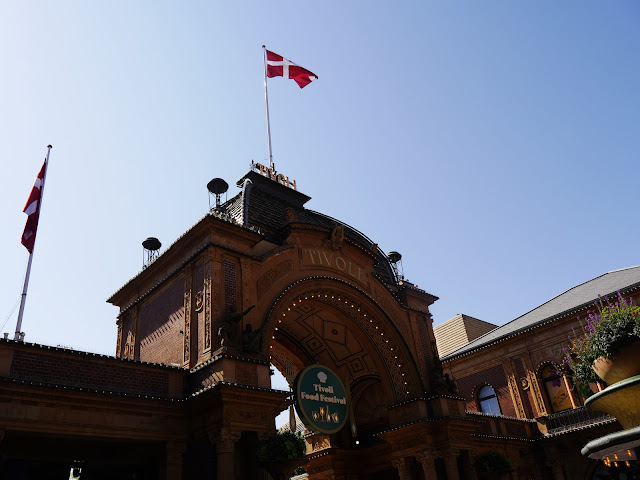


























































































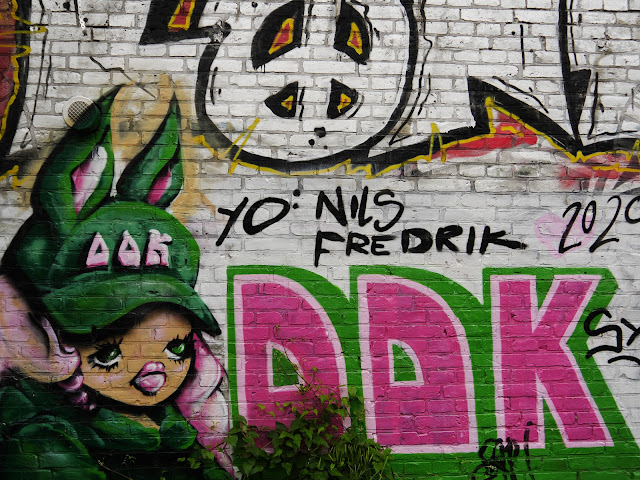


































































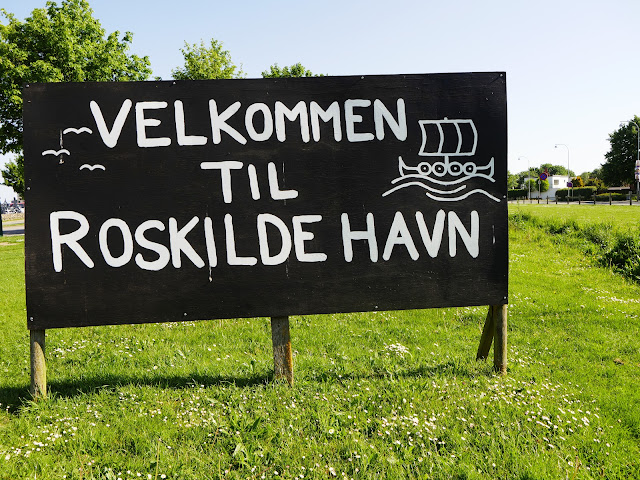
















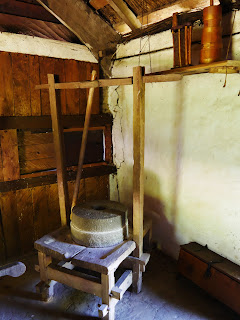























































































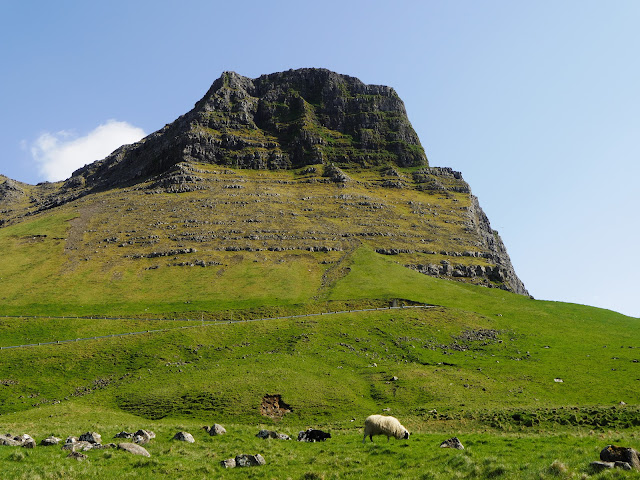









































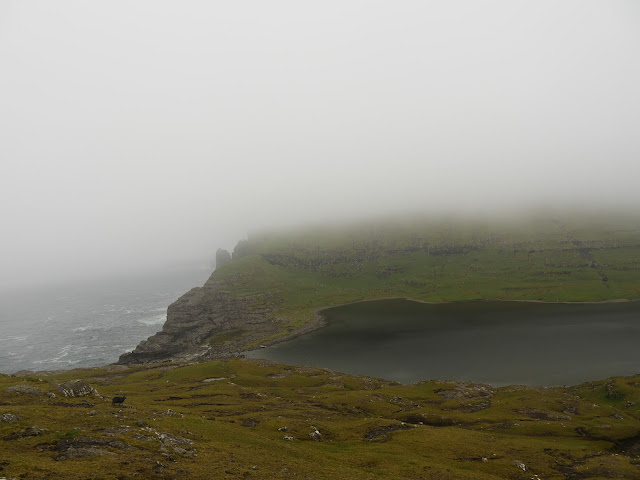
































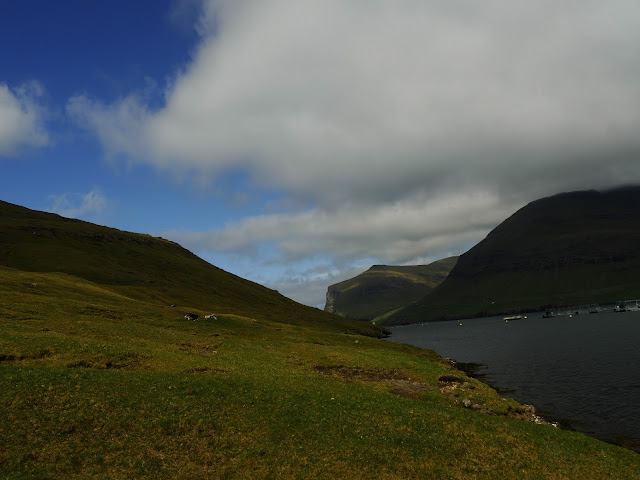































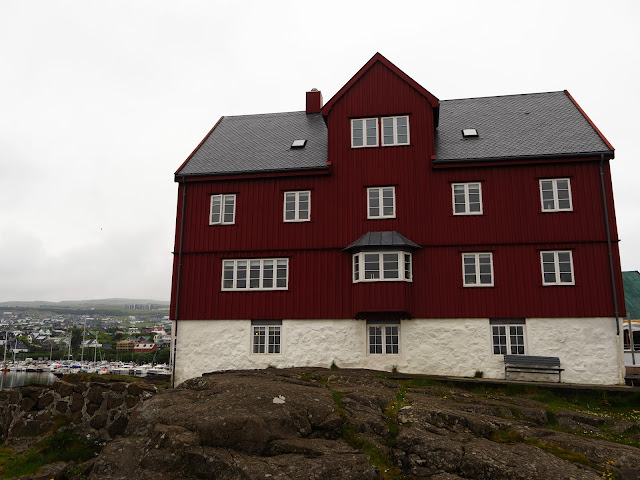
















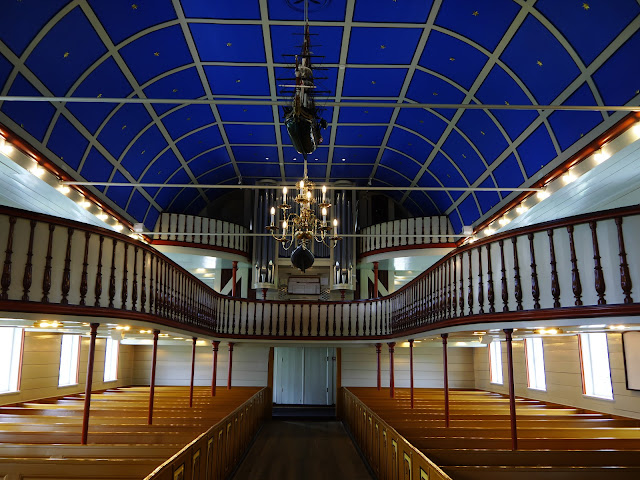



















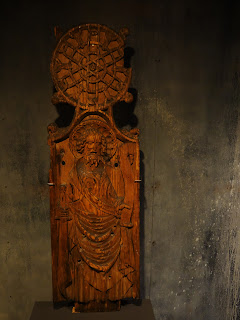



















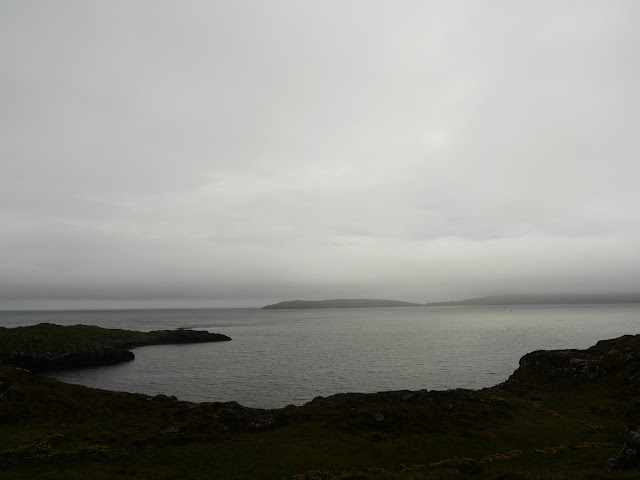
















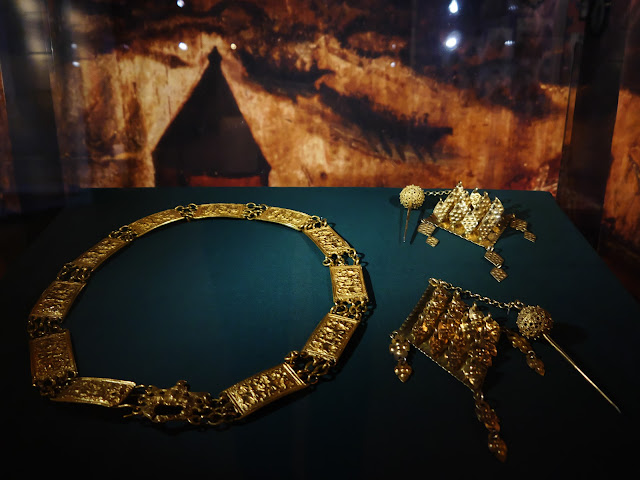








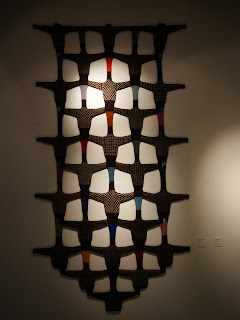

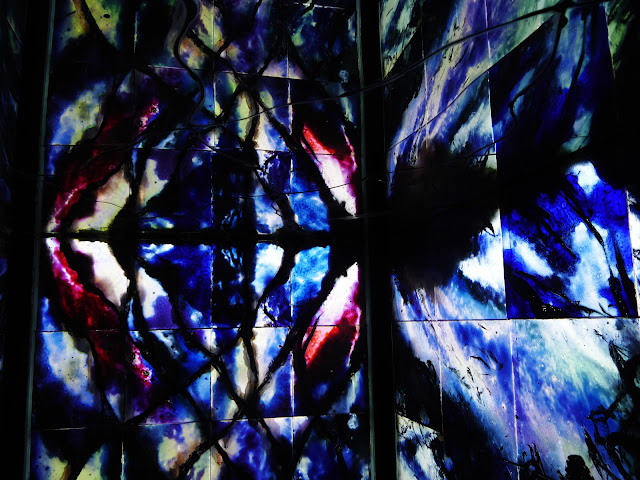



















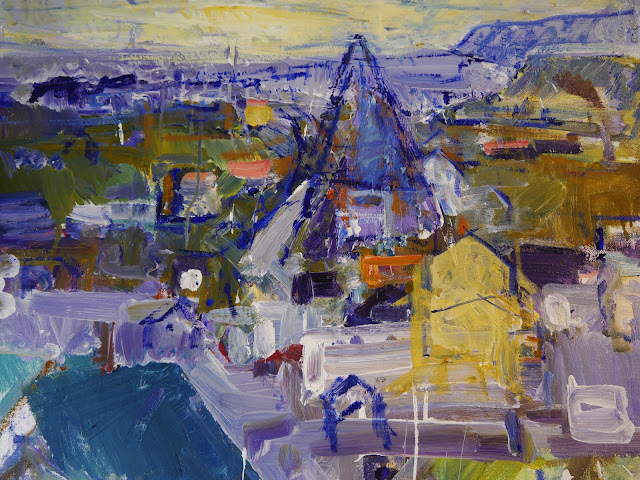




























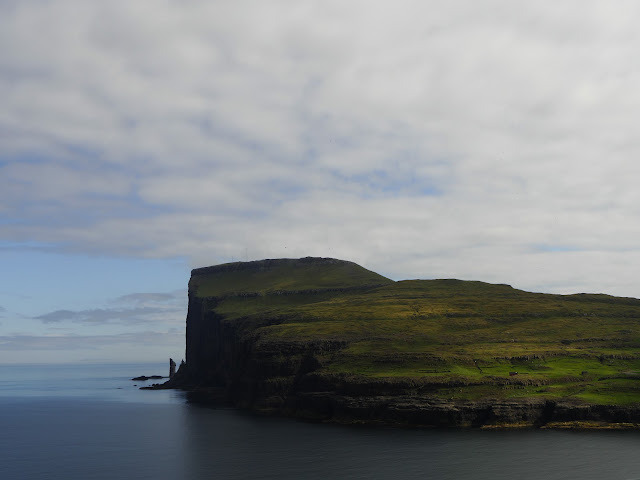








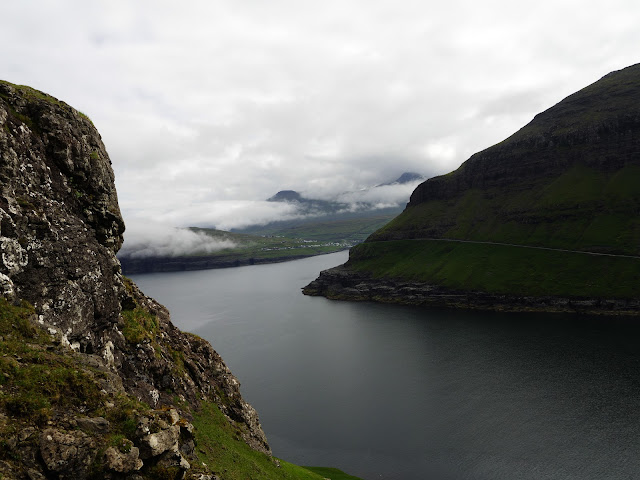













































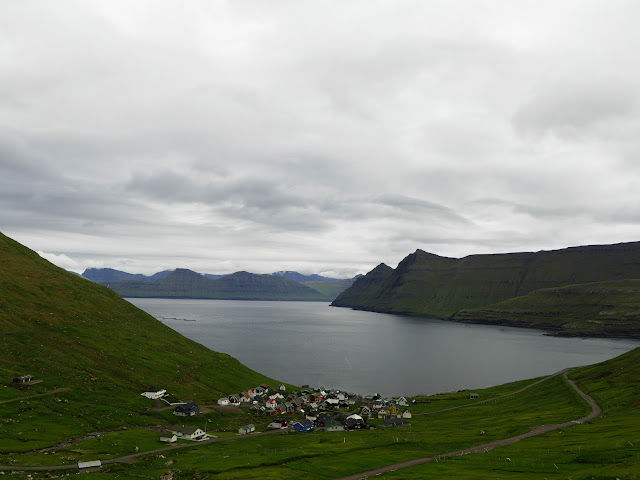
















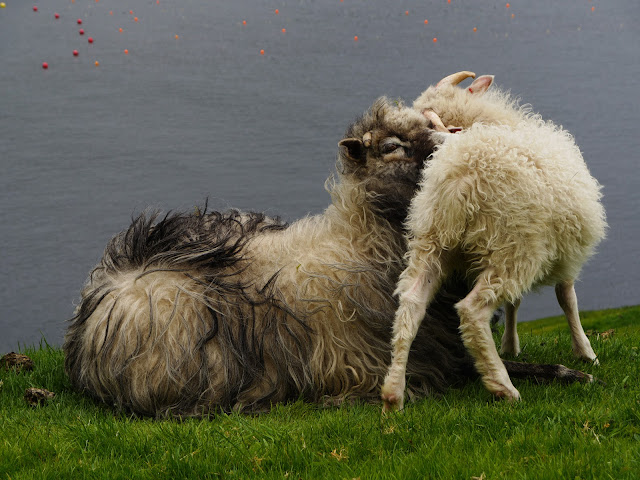





































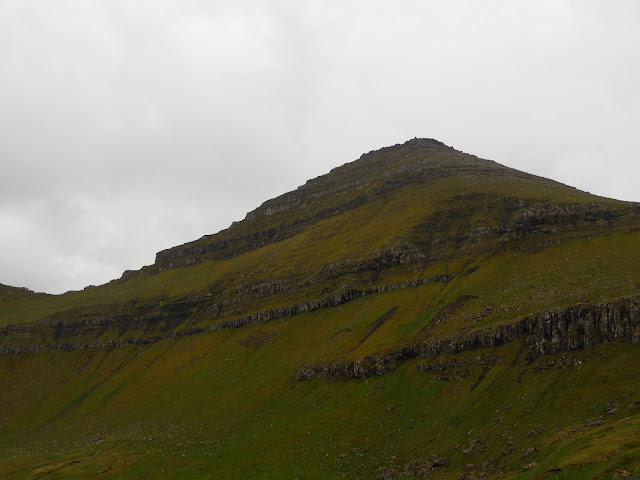








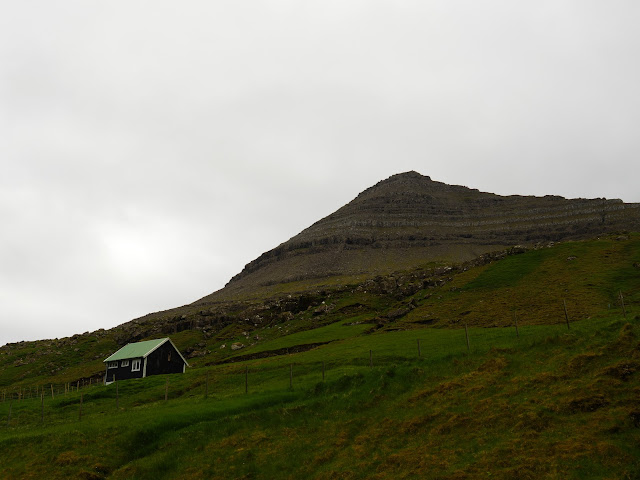

































































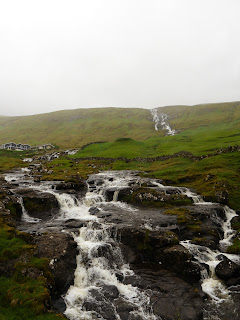





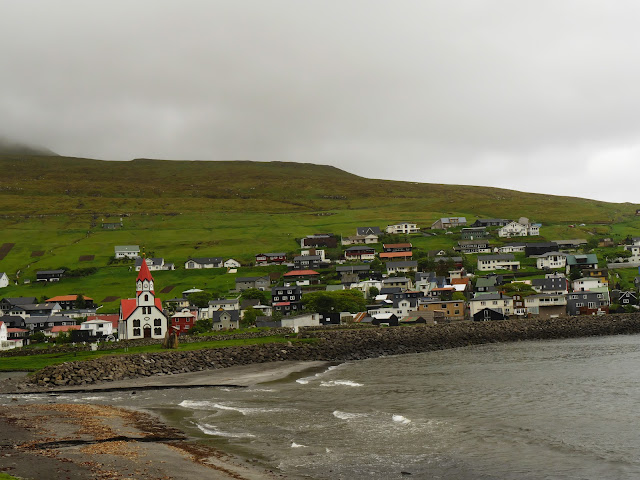






























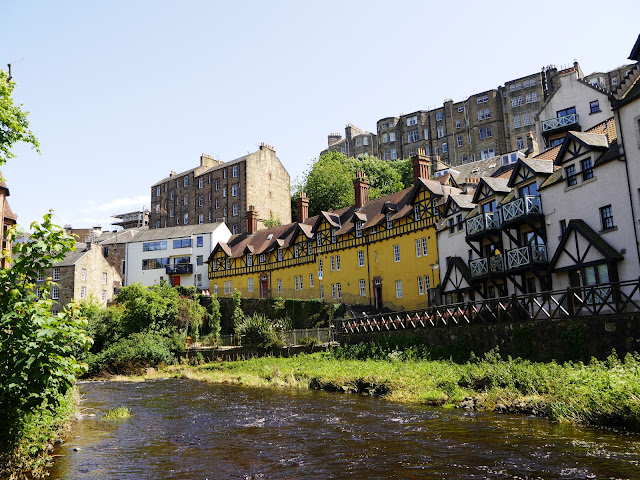






























































































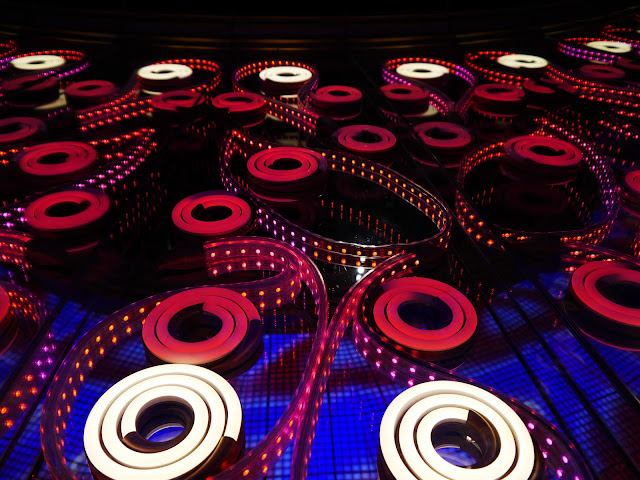

























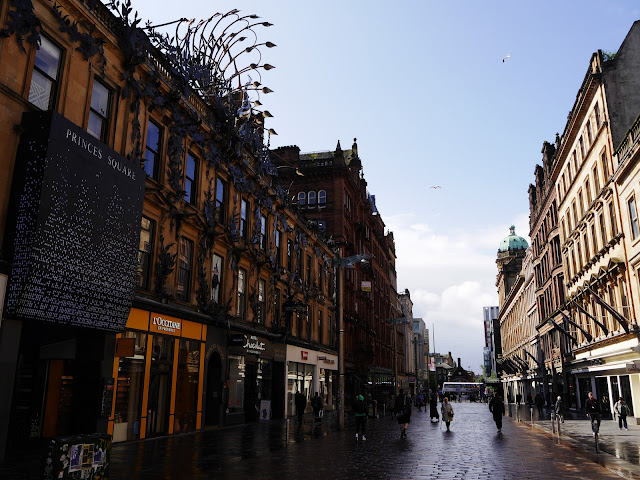






























































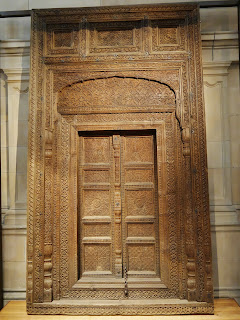

























































































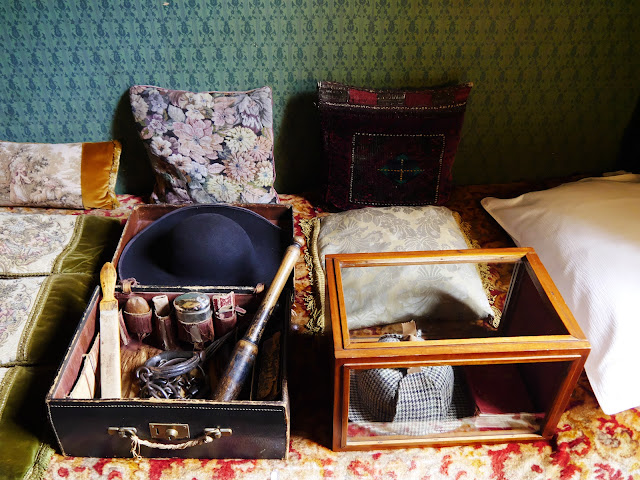






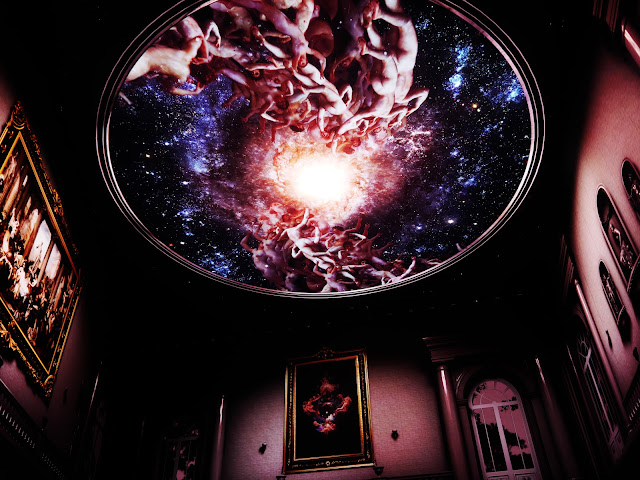






































































































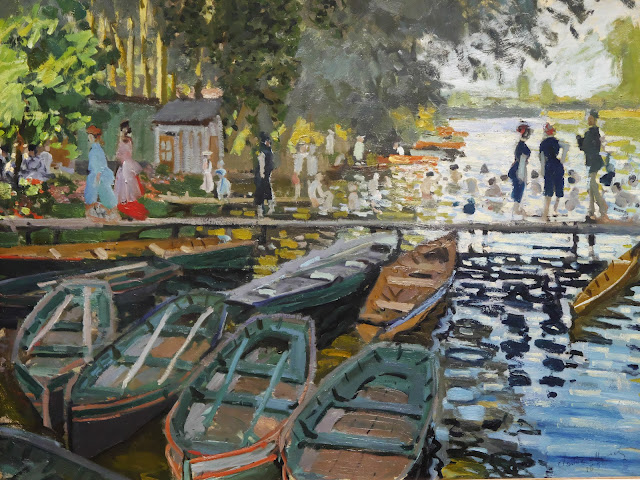





































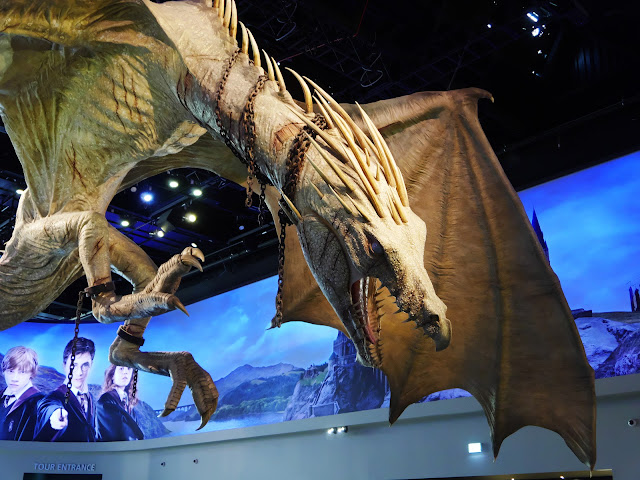








































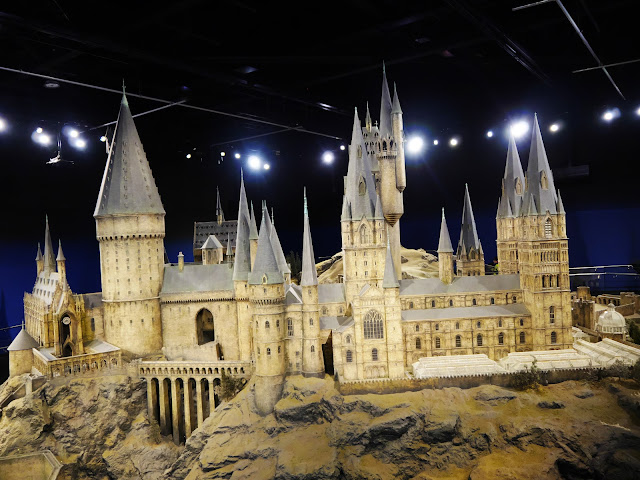































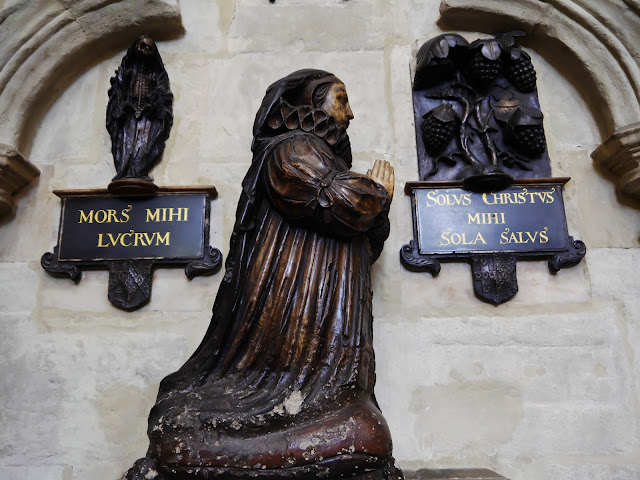





































Comments
Post a Comment